By Scott W. Michael
Papua New Guinea (PNG) is a magical and mysterious place. It boasts some of the most awe-inspiring scenery on earth, is home to incredible cultural diversity (there are over 850 indigenous languages being spoken) and is considered one of the least explored countries on the planet with a virtual treasure trove of plant and animals species yet to be discovered in the islands interior. The coastal marine habitats of PNG also rival most any region on earth in both diversity and beauty.
Milne Bay Province encompasses the extreme southeastern tip of mainland PNG as well an extensive off-shore area immediately eastward. It covers an area of approximately 102,000 square miles, which is peppered with islands and shoals that separate PNG from the Solomon Islands. The area has an extensive and complex system of submerged and emergent coral reefs. Milne Bay Province has one of the world’s richest reef and shore fish faunas on the planet, with at least 1,300 species being expected to occur in this area.
It is the diversity of habitats and animal species that have made Milne Bay Province a popular retreat for those looking for something other than the standard reef walls and coral pinnacles. While Milne Bay has breath-taking reefscapes, it has so much more! In fact, before names like Sipadan, Mabul, Lembeh and Anilao become muck-diver hotspots, dive operators in Milne Bay were exposing their guests to some of the best critter-hunting and muck-diving on the planet.
I have had the good fortune to visit this area several times, diving aboard the MV Chertan. This 60 foot vessel is owned by Rob van der Loos. Rob has been diving in this area for decades, but still delights in taking photos and video of the area’s residents. In fact, it is not unusual for Rob to do more dives than the guests! Rob is not only an enthusiastic marine naturalist and author (his book is Living Reefs of the Indo-Pacific), he is also one of the nicest guys I have met in the dive industry.
What follows is a look at some of my favorite dive sites. Be aware that the faunal communities at many of these coastal sites are very dynamic, especially the more mucky, sand slopes. Strong storms can greatly impact the substrate and temporarily alter animal communities at a particular site. That said, many of the sites mentioned below have long been favorites of visitors to Milne Bay – Let’s get started.
WAGA WAGA
Waga Waga is across the bay (the south shore of Milne Bay) from where the Chertan docks at Alotau. It is a relatively short trip (around two hours if memory serves me right) to this site. The main feature at Waga Waga is a wreck named the Muscoota, which lies on its side at a slight angle to the shore. Much of the ships side is above sea level. The bow reaches into the shallows, while the stern rests in water over 75 feet deep. Along the shoreline, adjacent to the wreck, there are sea grass meadows – an interesting habitat that you should explore to find different types of snake eels, cardinalfishes, wrasses and filefishes.
The wreck is home to a fascinating ichthyofauna. It is one of the best places in the Bay to find the tasseled wobbegongs (Eucrossorhinus dasypogon). This bearded shark is an ambush predator that spends almost all of its time in repose on the seafloor. When at rest, it keeps its tail curled up (a characteristic that is unique to this species) and will use its caudal fin as a lure to attract potential prey. It will life the tail over its back and wag it from side to side (this is rarely seen by divers as the shark does not want to attract your attention because you are not of edible size!).
The wreck is also home to many bony fishes. Resident schools of monos (Mono argenteus) dash over the bow of the ship. A handful of cardinalfish species move within the interstices created by the wreckage and over colonies of stony corals on and adjacent sea floor. A number of bubble-tentacled sea anemones (Entacmaea quadricolor) adorn the wreck and all of these are home to a pair of disparately-sized spinecheek anemonefish (Premnas biaculeatus) – the female is often several times larger than the male. Wrasses moved over the deck of the water-logged vessel looking for potential prey – this includes the pastel green (Halichoeres chloropterus), twinspot (Coris aygula), bird (Gomphosus varius) and striated wrasse (Pseudocheilinus evanidus). Angelfishes are also here, including Koran angelfish (Pomacanthus semicirculatus) and the half-black angelfish (Centropyge vroliki). If you search long enough, you may find a frogfish – our group discovered a white warty frogfish (Antennarius maculatus). On the sandy bottom near the wreck you will find shrimpgobies with its pistol shrimp associates. Nearer the fringing reef, you will find the orangespotted shrimpgoby (Amblyeleotris guttata) and the diagonal shrimpgoby (A. diagonalis). You might even find the shrimpgobies on sand patches on the wreck itself. For example, I have seen target shrimpgoby (Cryptocentrus strigilliceps), living with a big blue pistol shrimp, on the wreck. The wreck is also home to a PNG endemic, a little blenny called Ecsenius taeniatus.
A small patch reef is present in about 75-feet of water adjacent to the wreck that boosts an incredible array of large-polyped stony corals, including members of the genera Alveopora, Cynarina, Gonipora and Plerogyra. It also is sometimes home to juvenile tasseled wobbegongs.
Sullivan’s Patch
This is a beautiful bank reef with amazing coral growth, including loads of Acropora spp. Where there is so much reef structure, there is likely to be a rich-fish community. Such is the case with Sullivan’s Patch. The reef is home to a good assortment of damsels, butterflyfishes, angelfishes, fusiliers, surgeonfishes (including some lovely lined surgeonfishes, Acanthurus lineatus) and wrasses galore. Some labrids of note include: Beau’s fairy wrasse (Cirrhilabrus beauperryi), Napoleon wrasses (Cheilinus undulatus), red-breasted Maori wrasse (Cheilinus fasciatus) and the New Guinea tamarin wrasse (Anampses neoguinaicus). On my last dive at the site, I watched as a slingjaw wrasse (Epibulus insidiator) shadow an epaulette surgeonfish (Acanthurus nigricauda) – it moved alongside the acanthuridand waited for prey to be flushed from the algae as the surgeonfish fed. The beautiful vermiculate coral grouper (Plectropomus oligocanthus), a grouper that is not a common fish in many of the places I have been diving in the Indo-Pacific, was not uncommon here.
This site is also home to pinktail triggerfish (Melichthys vidua), a variety of parrotfishes and goatfishes that feed amid sand and rubble patches on top of the reef. There are clouds of anthias, including the yellowstripe (Pseudanthias tuka), redcheek (P. huchtii), and lyretail anthias (P. squamipinnis). You can also find an example of social mimicry at this location. The fusilier damsel (Lepidozygus tapeinosoma) looks like, and hangs out with P. tuka and apparently derives an anti-predation advantage (there is safety in numbers). There are also regal (Pygoplites diacanthus), the blue-girdled angelfish (Pomacanthus navarchus) and Lamarck’s angelfish (Genicanthus lamarcki) at “the Patch.” As far as larger predators are concerned, I have seen schools of smaller chevron barracuda (Sphyraena putnamiae) and one great barracuda (Sphyraena barracuda) as well as golden (Gnathanodon speciosus) and yellow spotted jacks (Carangoides fulvoguttatus).
This and other stony coral-rich reef areas are home to many species of butterflyfish. The chaetodontids you are likely to encounter include: the threadfin (Chaetodon auriga), eastern triangle (C. baronessa), Bennett’s (C. bennetti), speckled (C. citrinellus), saddled (C. ephippium), Klein’s (C. kleinii), raccoon (C. lunula), Pacific redfin (C. lunulatus), blackback (C. melannotus), Meyer’s (C. meyeri), tailspot (C. ocellicaudus), eightbanded (C. octofasciatus), ornate (C. ornatissimus), spotnape (C. oxycephalus), dot-and-dash (C. pelewensis), spotbanded (C. punctatofasciatus), latticed (C. rafflesi), reticulate (C. reticulatus), dotted (C. semion), speculum (C.speculum), doublesaddle (C. ulietensis), teardrop (C. unimaculatus), vagabond (C. vagabundus), the copperbanded (Chelmon rostratus), the yellow longnose (Forcipiger flavissimus), big longnose (F. longirostris) and pyramid butterflyfish (Hemitaurichthys polylepis). Other chaetodontids in the region are: highfin(Coradion altivelis), orangebanded (C. chrysozonus) and twoeye coralfish (C. melanopus) and the longfin (Heniochus acuminatus), pennant (H. chrysostomus), schooling (H. diphreutes), masked (H. monoceros), singular (H. singularis) and humphead bannerfish (H. varius).
As we moved toward a new site, we observed a large raft of Sargassum algae. We jumped in to look for Sargassum frogfish (Histrio histrio) and were not disappointed. We photographed several different specimens. There were also a troop of young longfin batfish (Platax teira) escorting the floating algal matt. If you are interested in exploring this habitat make sure you let Rob know and will make sure you get the opportunity if they run across any Sargassum rafts.
Lawadi (Dinah’s Beach)
This is a coastal bay with sand flats and slope with scattered rubble patches, coral heads and patch reefs. There are also expansive stands of the calcareous algae, Halimeda, in the shallows and over parts of the bay the bottom is covered with round stones. At the far western edge of the bay, there is a wonderful reef with all kinds of piscine goodies (more on this later). In the past, Lawadi has been one of the most productive critter sites in Milne Bay. But in more recent times, it has been yielding fewer sea slugs, crustaceans, cephalopods, frogfishes and scorpionfishes. That said, these critters are still around, just not in the numbers they have been in past years. (Remember, muck sites like shallow sand slopes can vary greatly from one year to the next depending on weather conditions.) There use to be a productive cleaning station on the slope, but this has apparently been pulverized by waves and debris that has slid down the slope and disrupted the reef structure. Even though it did not meet the expectations of long time Milne Bay veterans, I had a wonderful time at Lawadi!
Some of the highlights include the following: the shallows are goatfish heaven! It is great place to observe the different foraging strategies they employ, as well as to watch other opportunists (e.g., wrasses) that regularly follow them as they feed. Goatfishes can be seen hunting in tandem. They will work over a patch of macroalgae or a piece of rubble together. Like a pack of mad dogs, roving bands of yellowsaddle goatfish (Parupeneus cyclostomus) terrorize the cryptic communities in the area. A group of six dashes from one spot to the next, stopping to ravage the interstices between rubble, rocks and debris with their long chin barbels. I also observe a trio of many-barred goatfish (Parupeneus multifasciata) hunt at this site. When suitable prey habitat is located, the trio descends to the sea floor and begins shoving their snouts and barbels among the debris. These goatfishes are followed by opportunistic, like spine cheeks (nemipterids) and emperor snappers (Lethrinus spp.).
There are also roving heterospecifics feeding groups that include young parrotfishes and rabbitfishes. Pairs of forktail rabbitfish (Siganus argenteus) can be observed on their own, grazing algae and detritus off the sea floor. The area is patrolled by the handsome and solitary blackbarred snapper (Lutjanus semicinctus). A large group of yellowstripe goatfish (Mulloidichthys flavolineatus) is sometimes seen hovering several feet above the reef. Mixed among these goatfish is the occasional blackspot snapper (Lutjanus ehrenbergi). Scattered among the coral heads and small patch reefs, individual doublebar goatfish (Parupeneus crassilabris) rest on rocky mounds or coral colonies. The smooth, round stones in the shallow are home to several large day octopuses (Octopus cyanea). It is a great place to watch them hunt. They move over the stones and occasionally parachute over a rock, piece of coral or rubble and begin probing for food. These octopuses are sometimes followed by groupers, coronetfishes and emperor snappers. Courting pairs of halfmoon triggerfish (Sufflamen chrysopterus) can be seen in this area. The males exhibit orange on their flanks as they proposition neighboring females.
This location (as well as others in the region) is home to a diverse community of anemonefishes. The shallow are also home to gorgeous purple carpet anemones that harbor “families” of true clownfish (Amphiprion percula). You will also find Clark’s anemonefish (A. clarkii) (I have observed three color forms of this species here) living in E. quadricolor and the pink skunk anemonefish (A. perideraion) associating with beautiful Heteractis magnifica. There are also a couple of pairs of spinecheek anemonefish (P. biaculeatus). The yellow color morph of the saddleback anemonefish (Amphiprion polymnus) is also found in large Haddon’s carpet anemone (Stichodactyla haddoni). These are found on the sand flat and slopes. This area is also home to the Indo-Pacific sergeant major (Abudefduf vaigiensis), in many cases leks of males can be found guarding their pink eggs on the surface of coral boulders.
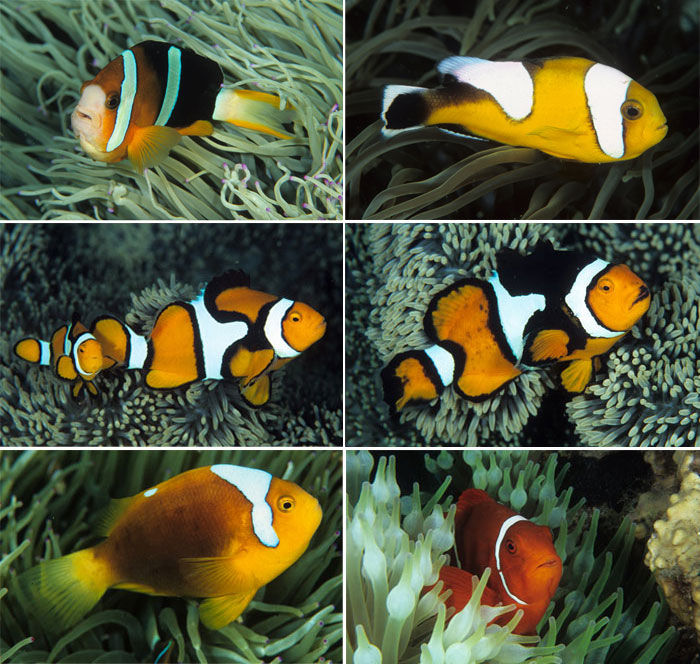
Top left: Amphiprion clarkii. Top right: Yellow Amphiprion polymnyus. Middle: Amphiprion percula. Bottom left: Amphiprion leucokranos. Bottom right: Premnas biaculeatus.
Twinspot of Fu Manchu lionfish (Dendrochirus biocellatus) can be viewed at night or early in the morning. They live in patch reefs that is also home to groups of cardinalfishes representing several different species (the predominant form was the attractive ringtailed cardinalfish [Apogon aureus]). Huge Volitans lionfish (Pterois volitans) hover between or over the coral (I know, big deal you can see these in Florida!), while spotfin (Pterois antennata) and dwarf lionfish (Dendrochirus brachypterus) rest in more secluded sections of patch reef. Small groups of stocky anthias (Pseudanthias hypselosoma) hang out above these coralline structures, picking off passing planktors. This is also a great area to find the whitemargin lyretail grouper (Variola albimarginata), which hangs near patch reefs waiting for potential prey to make a tactical mistake. From the deck of the boat, we observed a huge group of bigeye scad (Selar crumenophthalmus) in the shallows and a small school of queenfish (Scomberoides spp.)
If you are in to little, unusual fishes, this is a good place to find dwarf perchlet (Plectranthias nanus). Move down the slope in the early morning, and look around larger rocks and patches of debris and sponge. They are small, inconspicuous and usually dive for cover when you get too near, but they are there! These same small structures are home to juvenile emperor angelfish (Pomacanthus imperator), sixline soapfish (Grammistes sexlineatus) and the bluestriped pipefish (Doryrhamphus excisus). There are also frogfishes here. I found a gorgeous, yellow warty frogfish (Antennarius maculatus). I watched as this frogfish eyed a small, sand goby. The frogfish began fishing, apparently trying to entice the goby into striking range, but the goby was not duped or was not hungry. In the shallows, among beds of Halimeda, one can find Conde’s fairy wrasse (Cirrhilabrus condei). A few males, with a scattering of females, hover and swim among the Halimeda and other benthic debris (e.g., water logged tree branches). This area is also home to pairs of twostripe sleeper gobies (Valenciennea helsdingenii), as well as solitary or pairs of sixspot goby (V. sexgutta) and solitary longhorn cowfish (Lactoria cornuta).
Deacon’s Reef
On the west edge of the bay, you will find Deacon’s Reef. It is one of my favorite places to look for small reef fishes. It was certainly a gold mine on my last trip! Along the edge of the coastline, there is a cliff that has eroded so that it is undercut with large caves, swim throughs and overhangs. The cliffs and associated vegetation cast a shadow over the shallows of the fringing reef. This shaded region is home to some resilient stony coral species, sea fans and sponges. It is a good microhabitat to find the regal angelfish (Pygoplites diacanthus) – I observed a couple of juveniles moving under an overhang and in a cave along the shoreline. This same location is a favorite for the sixspot hind (Cephalopholis sexmaculata). Along the base of the cliff you are likely to see juvenile saddled coral grouper (Plectropomus laevis). The juvenile phase of this fish is thought to mimic the color of the toxic saddled toby (Canthigaster valentini). Unfortunately, this is a very camera shy species that is difficult to get close too.
As you move out from the coastal wall, there are very interesting coral formations. These include huge coral plates that look as though they have been lifted and shifted by some tectonic event. These, along with other stony coral structures, create a labyrinth that is home to a wide range of tiny reef fishes. I was very interested in finding a photographing dottybacks (family Pseudochromidae). In an area of 30 square feet, I found the recently described mournful dottyback (Pseudochromis lugubris), an elongate dottyback (P. elongatus), a small twolined dottyback (P. bitaeniatus) and a pair of oblique-lined dottybacks (Cypho purpurascens). In the cave created by one of the giant, leaning slabs, there was also a Pseudoplesiops sp. (there are at least five species in this genus found in this area), along with a group of yellow assessors (Assessor flavissimus) and a handsome arrowhead soapfish (Belonoperca chabanaudi) (Milne Bay is the only place that I have seen numerous B. chabanaudi and they occur at a number of different dive sites).
As you move out onto the reef, the diversity increases. There are large promontories drabbed in zooplanktivores, including yellowback anthias (Pseudanthias tuka) and several different chromis species. Unfortunately, mixed among the fine branching staghorn corals, the potato chip-like brown algae (known as Padina) grows and some places all but smothers coral colonies. The increased abundance of this macroalgae is a result of increased nutrients (e.g., run-off from date palm plantations). Among the branching corals, you will find orangetipped bristletooh (Acanthurus tominiensis). There are also a wide variety of labrids here, including coral hogfish (Bodianus mesothorax), redbreasted Maori wrasse (Cheilinus fasciatus), Allen’s tubelip wrasse (Labropsis alleni) (which I observed cleaning other fishes), Sulawesi Maori wrasse (Oxycheilinus celebicus) and the lunar wrasse (Thalassoma lunare), to name but a few. One can find the blackspot angelfish (Genicanthus melanospilos) at relatively shallow depths (as shallow as 30 feet) here. You are also likely to find the bluestripe anemonefish (Amphiprion chrysopterus) occupying the leathery sea anemone (Heteractis crispa). I found the unusual midnight dottyback (Pseudochromis paranox) in this area. This unusual pseudochromid apparently mimics the black pygmy angelfish (Centropyge nox). It is similar in color, have larger fins that give it a similar appearance and it even swims in a manner similar to C. nox. The black angelfish is a common site on Milne Bay coastal reefs. As you move down the reef, you will find overhangs. Those that have sand patches beneath are usually home to a Randall’s shrimpgoby (Amblyeleotris randalli) and its pistol shrimp partner.
Michelle’s Reef
Like Lawadi, this dive site has both muck and reef. For those that are more muck-inclined, you will want to swim to the east. Here you will find sunken logs and other debris, all resting on a fine, dark sand substrate. (Be careful, this substrate is easily put into suspension by a careless fin stroke.) It is a great place for shrimpgobies, including the giant shrimpgoby (Amblyeleotris fontanesii). This behemoth of a goby can reach a length of over 10 inches. It lives with a correspondingly large alpheid shrimp (Alpheus cf. fenneri) – it looks more like a crawfish than a standard pistol shrimp. Other shrimpgobies you are likely to encounter include numerous smiling shrimpgobies (Mahidolia mystacina) and the occasional yellownose shrimpgoby (Stonogobiops xanthorhinica).
If you move along the slope towards the east at a depth of about 40 feet you will run into the shoreward end of two long patch reefs that are home to loads of fish. This includes large, prides of volitans lionfish (P. volitans) either resting on coral structure or patrolling over the substrate. Large coral groupers (Plectropomus spp.) lurk near the base of the patch reef, redmouth groupers (Aethaloperca rogaa) hang just over the coral structure and coral hinds (Cephalopholis miniata) move among the reef interstices. There are also cleaning stations and you will frequently see the bluestreak cleaner wrasse (Labroides dimidiatus) servicing some of these large serranids. Make sure you look at the cleaners for imposters – you can also find the Mimic cleaner wrasse (Aspidontus taeniatus) on this reef and may see it take a chunk out of a passing fish. There are also large shoals of snappers and goatfishes at this site that make for interesting wide-angle photo opportunities. In the shallows, you will find large carpet sea anemones with attendant anemonefishes, soles (including a beauty that mimics a flatworm and has a snorkel like nostril) and a variety of interesting crustaceans.
If you swim along the shore line toward the west, you will run into a cliff that creates a submerged rocky wall encrusted with inverts. It is festooned with sponges, tunicates and sea fans. The wall is also permeated with crevices, caves and overhangs which provide shelter for a number of different reef fishes, as well as a ton of sessile and mobile invertebrates. One fish that is abundant here is the royal dottyback (Pseudochromis paccagnellae), which is found at depth of 50 feet or more. You can follow the wall around and investigate cracks in the wall or you can move down the wall into deep water. At the edge of the wall, the coral begins in earnest. If you follow the coral line down to depths of 80 feet or deeper, you will find shoals of the beautiful squareblock anthias (Pseudanthias pleurotaenia). On my last dive at this location, I found a large shoal that consisted mostly of male P. pleurotaenia (normally, females greatly outnumber the males in anthias shoals). There are huge lettuce corals and cup corals. When you move across the reef and begin your way up the slope you will find two large pinnacles that extend up to within about 20 feet of the surface. The tops of these are home to the typical mixed zooplanktivore shoals (including anthias and chromis damsels). On the deeper part of the slope, pairs of bluelined demoiselles (Chrysiptera caeruleolineata) are common on mixed sand and rubble patches. There are also large, loose groups of filamented flasher wrasse (Paracheilinus filamentosus). On one dive I ran across a rolling mass of large male flashers that were busy displaying at one another. This group also had Beau’s fairy wrasses (C. beauperryi) swimming among them. The slope has areas with a mix of Padina and rubble, as well as some amazing stony coral colonies. It is also possible to find the endemic damsel here, the Milne Bay demoiselle (Chrysiptera cymatilis).
Sponge Heaven
Sponge heaven is a wall that plunges into hundreds of feet of water. The reef top (which is 3 or 4 feet in depth at the edge of the reef) is home to scattered coral colonies and is laced with gutters and holes. These are home to a variety of demoiselles, including the beautiful orange tailed color form of the blue devil(Chrysiptera cyanea). You might also encounter groups of convict surgeonfish (Acanthurus triostegus) roaming over the reef flat invading the algae-rich farms of territorial damsels.
The wall is full of caves and overhangs. The shelves with their scattered coral colonies serve as perches for various blennies (including Ecsenius axelrodi and E. pictus) and are also home to small wrasses and damsels. The caves are home to the arrowhead soapfish and if you go deep enough, you will find the lovely multi-bar angelfish (Centropyge multifasciata). Off the reef, groups of fusiliers swoop past the reef wall as they forage for zooplankton. At a depth of 70 feet or more you could encounter small groups of princess anthias (Pseudanthias smithvanizi) along the wall, while close inspection of deep reef interstices could yield the unarmed perchlet (Plectranthias inermis). One of the more spectacular fish you can see here is the slenderspine group (Gracilia albimarginata). The adults often linger off of reef walls looking for prey.
Not far from this dive site, there is a beautiful bay where you can see Rob’s new land based operation (Tawali Resort) on the top of a jungle clad hill. The resort is beautifully constructed and done in a tasteful way so that it blends with the gorgeous scenery. We anchored in the bay that evening, and decided to do a night dive. It turned out to be a great place to observe the Milne Bay epaulette shark (Hemiscyllium michaeli), while an adjacent wall was home to huge Spanish dancer sea slugs (Hexabranchus sanguineus), some of which harbored emperor shrimp (Periclimenes imperator) within their feathery gills.
Wahoo Point
This is a place to find the big fellas. For example, one of our group saw an adult great hammerhead shark (Sphyrna mokarran) (of course, I had my head stuck in a crevice and missed this beauty!). Named for the pelagics that often frequent this steep drop-off (including its toothy torpedo name-sake, the Wahoo [Acanthocybium solandri]), this is also an awesome place to see lots of smaller reef fishes. For those that are current-haters, be prepared. It can really blow at this spot. There are some conspicuous promontories covered with stony and soft corals, along with large green, elephant ear sponges. The side of one of these reef structures had coloniesPachyclavularia that were thumb-sized and a lovely shade of green. There are scattered patches of rubble with fungiid corals, macroalgae, large foraminiferans and large Hippopus clams.
This place is home to loads of different grouper species (including the slenderspine grouper, leopard hind [Cephalopholis leoparda], peacock hind [C. argus] and squaretail coral grouper [Plectropomus areolatus]), angelfishes, butterflyfishes, surgeonfishes, wrasses and triggerfishes (the scythe triggerfish (Sufflamen bursa).A group of large elongate surgeonfish (Acanthurus mata) was seen hanging in the current catching zooplankton and possibly fecal material produced by other zooplanktivores and pelagic predators that passed by. Over the hard carbonate substrate, a group of adult yellowsaddle goatfish forage over the rubble until they come across a cleaning station. Like a group of jet fighters, they all land on the substrate and rest there with their mouths wide open as a cleaner services them. At this location, you need to look under overhangs in 50 or 60 feet of water and you are likely to see the multibar angelfish.
Samari
Samarai Island is a bit of a boat ride from the other dive sites listed above. It is on the south side of the bay. It is a special place that should be visited if time and weather allow. The most magnificent resident of the area are the large manta rays (probably Manta birostris, but possibly M. alfredi?). These giant batoids visit cleaning stations located on scattered patch reefs. It is perfect situation for photographers. You simply kneel in the sand and lay low near one of the cleaning spots and waiting for the mantas to come in for grooming. The primary groomers are bluestreak cleaner wrasses, but there are also lunare wrasses that occasionally swim along the ventral surface of the giant rays and inspect the body and gill openings for parasites. In the surrounding sand, one can find loads of shrimpgobies, sea bream and wrasses. There are occasionally patches of calcareous algae (Halimeda spp.) that are also home to the incredibly cryptic and tiny Coleman’s pygmy seahorse (Hippocampus colemani).
There is a pier that is a popular dive site around Samari as well. The pilings are veneered with colorful sponges and some gorgonians. This is where we collected the holotype of the angelfish, Chaetodontoplus vanderloosi. This species is very similar to the black velvet (Chaetodontoplus melansoma) and phantom angelfish (C. dimidiatus). There are pygmy angelfishes that reside at the base of the pilings among rubbish and debris, as well as various butterflyfishes. For example, I saw a beautiful pair of copperbanded butterflyfishes. As is often the case with this type of dive site, the pier pilings are covered with all kinds of sessile invertebrates, as well as shrimps, crabs, cuttlefishes, gastropods and sea slugs.
If you dive (or even snorkeler) further down the shoreline from the pier, there is a fringing reef that is home to some of the most beautiful true percula clownfish I have ever seen – many of these individuals have loads of black between the white body bars. You might also find Hemiscyllium michaeli here (I collected one of the paratypes of the species at this location) and see the rare bluespotted pufferfish (Arothron caeruleopunctatus).
Rhinopias Fever
I need to end with a quick word about a very special fish. In the past, one of the main targets in Milne Bay has been the king of the critters – the weedy scorpionfish (Rhinopias aphanes) In fact, there were certain dive sites where they would see as many as six of these beauties. While finding R. aphanes at a number of the dive sites in the area use to be considered a sure thing, it is no longer so. In fact, the last trip that I made to the area, we did not see one.
Why the disappearance? There is no aquarium fish collecting in the area (don’t blame us fish keepers for this one!) and the locals do not eat them, so it has been suggested that they may have moved on because of changes in the environmental parameters -namely that the sea surface temperatures in portions of the bay have warmed up. That said, this is all speculation at this point.
Conclusion
That ends my survey of some of my favorite sites in Milne Bay. Most of these are well-known, older sites, but new locations are being discovered all the time. One such site, known as Ray’s Rubble, was located in the last five years or so and is reportedly crawling with critters. In fact, Roger Steene tells me it is the best critter site he has ever seen, being replete with sea slugs (many of which are apparently undescribed), crustaceans, cephalopods, pipefishes and sea horses (of course, the fauna is much more varied than this, but these are some of the more charismatic groups that are well-represented). That is the nature of Milne Bay -it is a location that offers diverse habitats, which in turn offers a greater variety of faunal communities. Happy fish-watching!
A word to the wise: PNG travel sense
Janine and I have had the opportunity to travel to many interesting and unusual places and have been fortunate not to have had any really bad encounters with the locals. But of all the places we have been, there have been instances in PNG where we really did feel like things may spin out of control. This is a place (especially the larger urban areas), where you really need to have your wits about you. I would recommend you get out of Port Moresby as quickly as possible, as it is known for its abundance of thieves and hooligans, some of which will not think twice about taking a swipe at you with a machete in order to lay claim to your valuables. If you have to spend the day or even an overnight in Moresby, most people seek refuge at one of the finer hotels until it is time to leave on your flight to Gurney. There are other areas in PNG that are known for what the locals call “rascals.” This is not a place where you want to let your hair down and go out and get sloshed in a local pub. Being sober of mind and making right decisions will be a great asset in PNG. The local police are typically very unreliable. They may come and investigate a problem if they have enough gas in the patrol car, but then again, they may not. You might say, anarchy rules! That is not to say, all the locals are out to get you. This could not be farther from the truth. Most are extremely friendly and helpful, but like everywhere there are a subset that are opportunists. In conclusion, treat the larger towns and cities of PNG like you would the big cities of North America (e.g., Miami, Houston, Los Angeles), but just remember, you are pretty much on your own (i.e., don’t count on law enforcement to bail you out of a bad situation). Also know, once you’re on Rob’s boat, you will be very safe and secure!


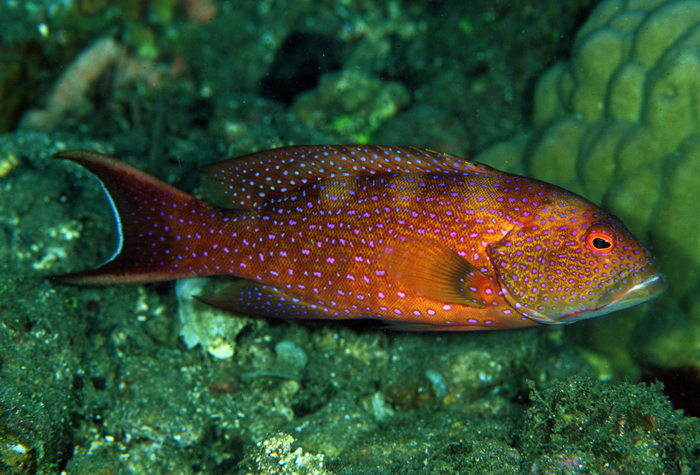
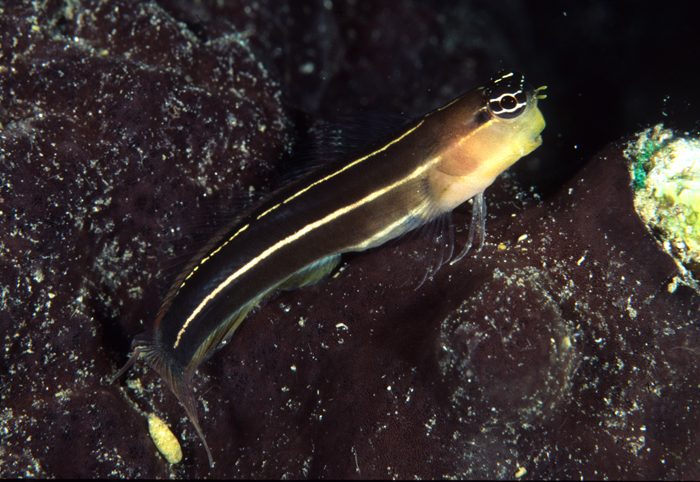
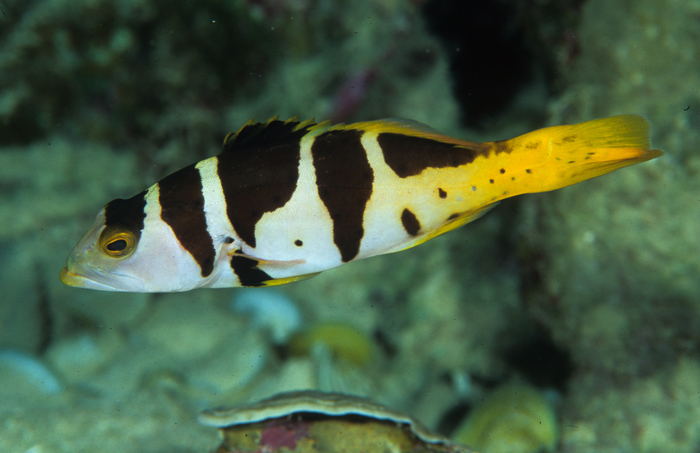

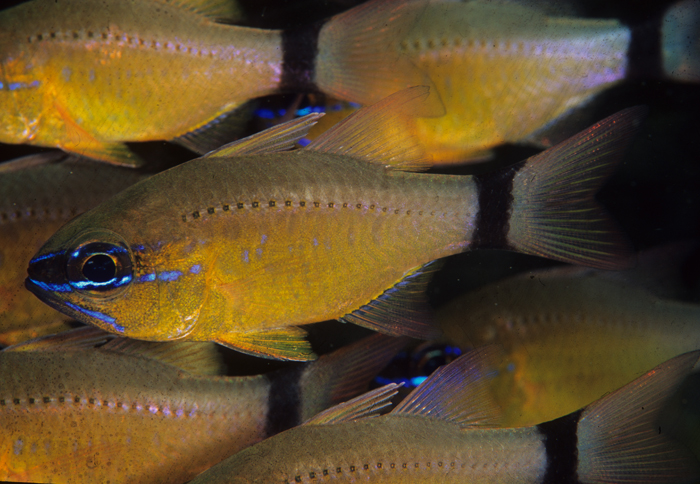

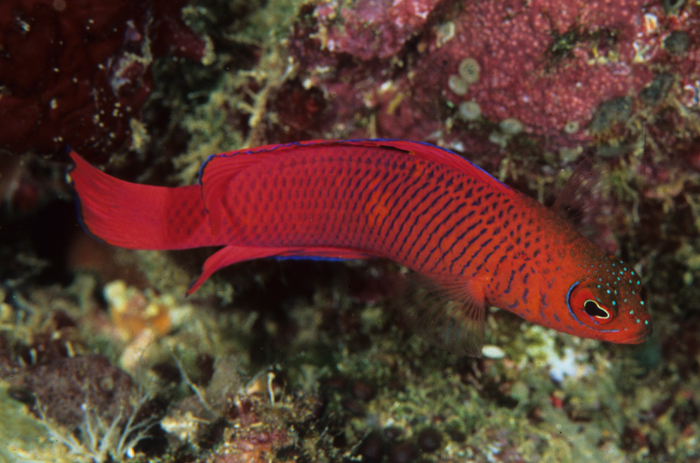




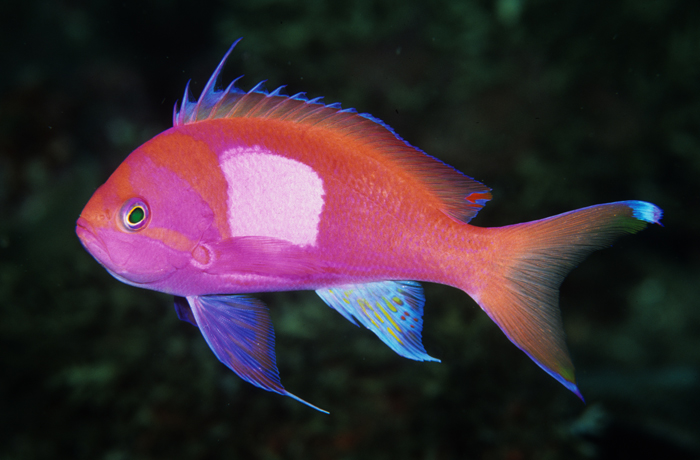

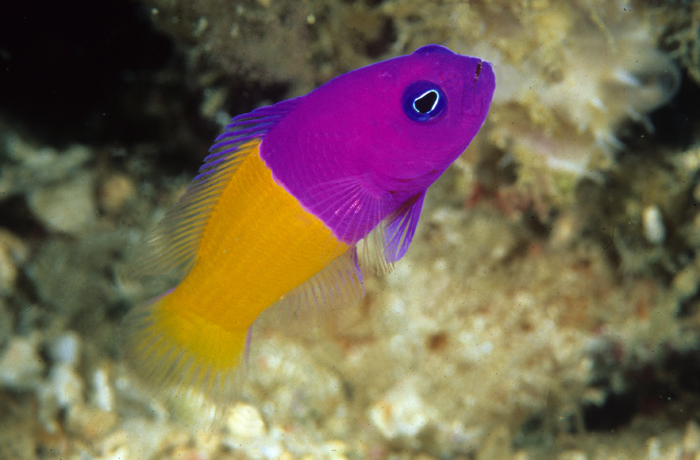
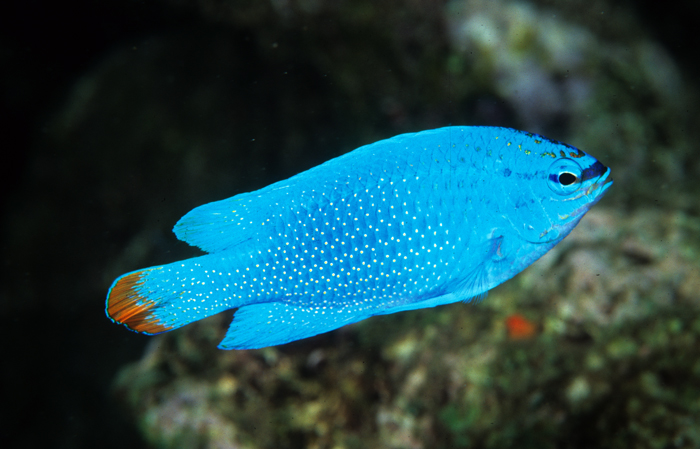

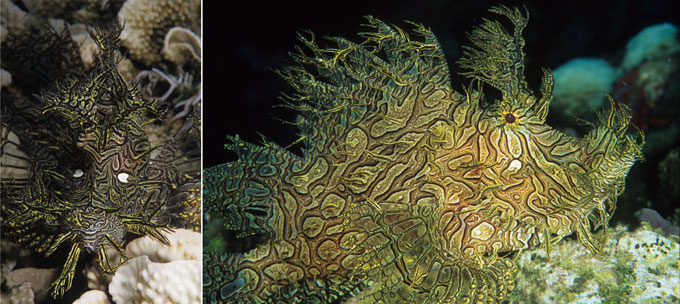
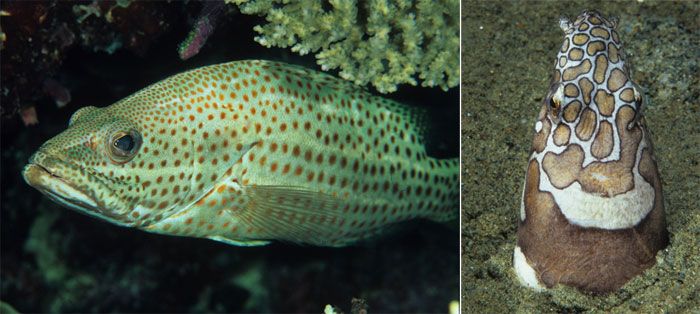

0 Comments